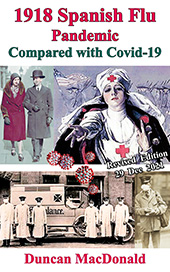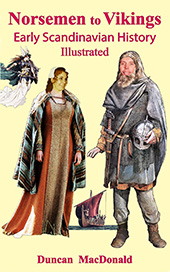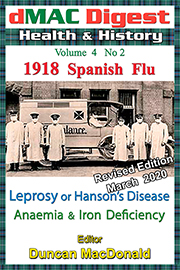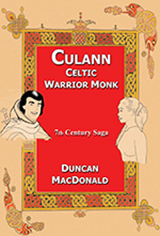Duncan MacDonald
Jakarta 2 March 2008
Heart disease has been the number one killer of Americans every year since 1921. [ 1 ] By the middle of the 20th century heart disease was the leading cause of death in northern Europe. The number of deaths caused by heart disease peaked in the 1980's and preventive treatments have led to a decline in heart disease deaths in many developed countries. [ 2 ]
How Does the Heart Work? Your heart muscle (myocardium)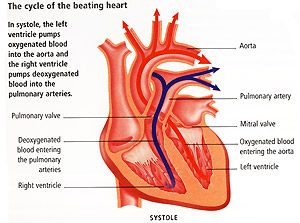 is about the size of your clenched fist. It sits behind your breastbone and beats constantly, starting shortly after conception and continuing for more than seventy years for most of us. The heart pumps oxygenated blood to all the cells in the human body, including its own cells, bringing them nourishment and hormones. It then sends the used or deoxygenated blood back to the lungs, so the process can begin again.
is about the size of your clenched fist. It sits behind your breastbone and beats constantly, starting shortly after conception and continuing for more than seventy years for most of us. The heart pumps oxygenated blood to all the cells in the human body, including its own cells, bringing them nourishment and hormones. It then sends the used or deoxygenated blood back to the lungs, so the process can begin again.
The major artery that delivers blood to the rest of the body is called the aorta. [ 3 ]
Coronary Artery Disease (CAD) begins with a build up of plaque in either the left or right coronary artery or their branches. This reduces the supply of blood to the heart, but early on this reduction is not severe enough to compromise the heart muscle or produce any symptoms. Later, as the plaque enlarges and further reduces blood flow, this interruption can reach the critical point where the heart muscle no longer gets adequate oxygen delivery when it is working vigorously – as when you exercise.
How is Cardiac Arrest Different from a Heart Attack Most people think a heart attack happens quickly and causes someone to grab his or her chest and fall to the ground. That's actually a picture of cardiac arrest. A heart attack, as the term is commonly used today, generally means the blockage of an artery in the heart that kills some heart muscle (myocardial infarction). A heart attack usually gives some warning. Chest pain or other symptoms can prompt someone to get help before the blockage totally disrupts the heart's rhythm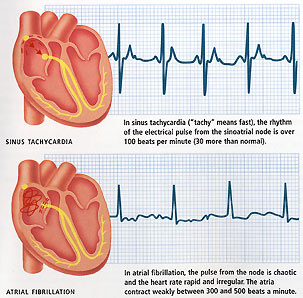
Cardiac arrest,< though, strikes suddenly and out of the blue. Most cardiac arrests occur when the heart's powerful lower chambers, the ventricles, start beating very fast (ventricular tachycardia [ta-kih-car-dee-uh]) or fast and chaotically (ventricular fribrillation). Either one of these makes it impossible for the heart to pump blood to the body.
After just five seconds without blood circulation, a person passes out. Another few seconds, the oxygen in the brain causes nerves to start firing, making the muscles twitch and the eyes roll back. Even that activity stops in less than a minute. The chances of surviving a cardiac fall about 10% for each minute the heart stays in ventricular fibrillation. Shock the heart back into a normal rhythm within two minutes and the victim has an 80% chance of surviving. Deliver that shock after seven minutes and the odds are less than 30%.
If someone near you goes into cardiac arrest, calling 108 (Indonesia Medical Emergency) is a must. CPR (cardiopulmonary resuscitation) is also important because it keeps blood flowing to the brain and other vital organs.
How Does Coronary Heart Disease Happen The cause of the blockages that set off these events is called atherosclerosis. The artery walls become filled with soft mushy deposits, which eventually harden to make the artery stiff and narrow. There are four steps that occur in what is known as the coronary cascade to a heart attack.
1. Weakened Lining The first step on the road to heart disease appears to require an elevated level of blood cholesterol, carried particularly in the LDL (low-density lipoproteins). When there is an excess LDL in the bloodstream, some of it moves out of the blood and into the artery wall. The higher the LDL level, the more LDL finds its way into the artery wall.
Every artery wall has three layers. The inner layer (intima), has a delicate single layer of cells (endothelial cells) between it and the bloodstream, which acts as kind of Teflon coating for the artery. High cholesterol, high blood pressure, smoking and diabetes, can disrupt the function of endothelial cells.
2. Inflammatory Response is generated by these events. The endothelial cells at key locations in the arteries release chemical messengers (chemokines), which in turn call immune cells (macrophages) to the scene. Macrophages ingest the LDL and become engorged with cholesterol, forming a foam cell (so named because the cell looks foamy). When the prey is a lipid particle that continually produced by the body, it becomes like an infection that never ends. More LDL keeps being deposited and more macrophages keep getting called to clean up the mess.
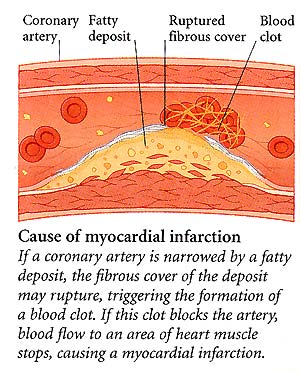
3. Plaques Form in an attempt to form a cap over the inflammation. This is the birth of smooth muscle cells, called plaque, which can narrow the artery. Some early stage plaque formation may be reversible but later stages are permanent.
4. Clot Causes Heart Attack Though the reduced blood flow caused by the plaque and inflammation taxes the heart, it usually doesn't cause a heart attack. Heart attacks occur when the plaque ruptures. Plaque deposits teem with inflammatory cells. The more inflammatory cells and cholesterol – and the thinner the cap that covers them - the more unstable the plaque.
About two-thirds of all heart attacks result from the rupture of smaller plaques – those that narrow the artery only by 40% - 60%. Though larger plaques narrow the arteries by 70% - 80%, they tend to be covered by thicker caps with fewer inflammatory cells underneath.
The problem is that in the case of an atherosclerotic plaque rupture, the wound is inside the artery wall. In the coronary arteries however, the clot further blocks the blood flow. The clot is known as a thrombus. Deprived of blood and oxygen, the portion of the heart muscle that depends on the artery begins to die. This process is medically known as myocardial infarction or MI (em-eye).
We laymen would call it a heart attack.
Our next article will describe the symptoms experienced (women have different indications to men), and what to do if you have a heart attack. >>see Heart Attack Diabetes
Diabetes
How Does the Heart Work? Your heart muscle (myocardium)
 is about the size of your clenched fist. It sits behind your breastbone and beats constantly, starting shortly after conception and continuing for more than seventy years for most of us. The heart pumps oxygenated blood to all the cells in the human body, including its own cells, bringing them nourishment and hormones. It then sends the used or deoxygenated blood back to the lungs, so the process can begin again.
is about the size of your clenched fist. It sits behind your breastbone and beats constantly, starting shortly after conception and continuing for more than seventy years for most of us. The heart pumps oxygenated blood to all the cells in the human body, including its own cells, bringing them nourishment and hormones. It then sends the used or deoxygenated blood back to the lungs, so the process can begin again.The major artery that delivers blood to the rest of the body is called the aorta. [ 3 ]
Coronary Artery Disease (CAD) begins with a build up of plaque in either the left or right coronary artery or their branches. This reduces the supply of blood to the heart, but early on this reduction is not severe enough to compromise the heart muscle or produce any symptoms. Later, as the plaque enlarges and further reduces blood flow, this interruption can reach the critical point where the heart muscle no longer gets adequate oxygen delivery when it is working vigorously – as when you exercise.
How is Cardiac Arrest Different from a Heart Attack Most people think a heart attack happens quickly and causes someone to grab his or her chest and fall to the ground. That's actually a picture of cardiac arrest. A heart attack, as the term is commonly used today, generally means the blockage of an artery in the heart that kills some heart muscle (myocardial infarction). A heart attack usually gives some warning. Chest pain or other symptoms can prompt someone to get help before the blockage totally disrupts the heart's rhythm

Cardiac arrest,< though, strikes suddenly and out of the blue. Most cardiac arrests occur when the heart's powerful lower chambers, the ventricles, start beating very fast (ventricular tachycardia [ta-kih-car-dee-uh]) or fast and chaotically (ventricular fribrillation). Either one of these makes it impossible for the heart to pump blood to the body.
After just five seconds without blood circulation, a person passes out. Another few seconds, the oxygen in the brain causes nerves to start firing, making the muscles twitch and the eyes roll back. Even that activity stops in less than a minute. The chances of surviving a cardiac fall about 10% for each minute the heart stays in ventricular fibrillation. Shock the heart back into a normal rhythm within two minutes and the victim has an 80% chance of surviving. Deliver that shock after seven minutes and the odds are less than 30%.
If someone near you goes into cardiac arrest, calling 108 (Indonesia Medical Emergency) is a must. CPR (cardiopulmonary resuscitation) is also important because it keeps blood flowing to the brain and other vital organs.
How Does Coronary Heart Disease Happen The cause of the blockages that set off these events is called atherosclerosis. The artery walls become filled with soft mushy deposits, which eventually harden to make the artery stiff and narrow. There are four steps that occur in what is known as the coronary cascade to a heart attack.
1. Weakened Lining The first step on the road to heart disease appears to require an elevated level of blood cholesterol, carried particularly in the LDL (low-density lipoproteins). When there is an excess LDL in the bloodstream, some of it moves out of the blood and into the artery wall. The higher the LDL level, the more LDL finds its way into the artery wall.
Every artery wall has three layers. The inner layer (intima), has a delicate single layer of cells (endothelial cells) between it and the bloodstream, which acts as kind of Teflon coating for the artery. High cholesterol, high blood pressure, smoking and diabetes, can disrupt the function of endothelial cells.
2. Inflammatory Response is generated by these events. The endothelial cells at key locations in the arteries release chemical messengers (chemokines), which in turn call immune cells (macrophages) to the scene. Macrophages ingest the LDL and become engorged with cholesterol, forming a foam cell (so named because the cell looks foamy). When the prey is a lipid particle that continually produced by the body, it becomes like an infection that never ends. More LDL keeps being deposited and more macrophages keep getting called to clean up the mess.

3. Plaques Form in an attempt to form a cap over the inflammation. This is the birth of smooth muscle cells, called plaque, which can narrow the artery. Some early stage plaque formation may be reversible but later stages are permanent.
4. Clot Causes Heart Attack Though the reduced blood flow caused by the plaque and inflammation taxes the heart, it usually doesn't cause a heart attack. Heart attacks occur when the plaque ruptures. Plaque deposits teem with inflammatory cells. The more inflammatory cells and cholesterol – and the thinner the cap that covers them - the more unstable the plaque.
About two-thirds of all heart attacks result from the rupture of smaller plaques – those that narrow the artery only by 40% - 60%. Though larger plaques narrow the arteries by 70% - 80%, they tend to be covered by thicker caps with fewer inflammatory cells underneath.
The problem is that in the case of an atherosclerotic plaque rupture, the wound is inside the artery wall. In the coronary arteries however, the clot further blocks the blood flow. The clot is known as a thrombus. Deprived of blood and oxygen, the portion of the heart muscle that depends on the artery begins to die. This process is medically known as myocardial infarction or MI (em-eye).
We laymen would call it a heart attack.
Our next article will describe the symptoms experienced (women have different indications to men), and what to do if you have a heart attack. >>see Heart Attack

